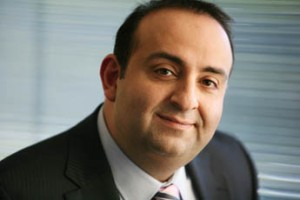The fall in oestrogen during the menopausal transition can cause a wide range of symptoms. Besides the commonly known vasomotor symptoms like hot flushes and night sweats, women can also experience a range of other issues, such as irritability, sleeping difficulties, joint pain and vaginal dryness to name just a few of many.
It is less often mentioned how the menopause affects changes to the quality of the skin and the effects hormone replacement therapy have on the biggest organ of our body, the skin.
Loss of oestrogen causes changes to the skin
As we age our skin becomes thinner and it loses elasticity. As the architecture of our skin changes, the skin becomes drier. A third of dermal collagen may be lost in the first five years after menopause and we continue to lose approximately 2,1% of our collagen per year. The skin thickness decreases by 1,1% every year. Our skin becomes more prone to injuries and bruising, we notice that wound healing becomes slower. The fat compartments in the cheeks descend causing marionette lines and jowls to appear in the face, making it look more saggy.
Understanding the natural ageing process
Ageing of the face is a natural process that is influenced by extrinsic and intrinsic factors. Extrinsic factors like UV exposure are often preventable. Sunlight will cause photodamage to the skin, causing pigmentation and fine wrinkles. Smoking is another extrinsic factor, which can damage collagen and therefor accelerating the loss of elasticity over time.
Our diet plays an important role in the glycation of collagen, which can contribute to premature skin ageing and the elastic fibers of the skin becoming rigid.
Sleep deprivation is an example of an intrinsic factor. The lack of sleep can make us age faster. Women in the perimenopause are often troubled by sleeping problems, most commonly women in the menopausal transition complain that they are waking up early. This can start years before the first hot flushes occur. Sleep deprivation can increase DNA damage and decrease the body’s ability to repair damaged DNA. The loss of sleep also drives up inflammation. If a patient doesn’t sleep well, they may feel more irritable and their concentration may be reduced, which can have a huge impact on their work and their relationship.
When we give combined bioidentical HRT containing micronised progesterone, one of the benefits that many women appreciate is that women are able to sleep again, which is a big improvement for their quality of life.
Bioidentical HRT helps to maintain bone mass and reduce the risk of fractures caused by Osteoporosis. We can perform a DEXA scan to check your bone health in the hip and spine for the years to come. From an aesthetic perspective, it is interesting that over the years we even lose bone structure in the face. We have learnt from studies that as we age, our eye sockets widen and that our brow bone and chin recede, which affects the soft tissue above and the appearance of the face and neck.
So how does Oestrogen work on the skin?
We know that there are two receptors, the oestrogen receptor alpha and oestrogen receptor beta. The latter is the receptor, which is expressed on skin cells. During the perimenopause this receptor becomes less expressed in the skin and additionally the levels of oestrogen drop as the body can produce less endogenously.
Oestrogen may protect against oxidative damage, it increases the synthesis of elastic fibre, collagen type II and Hyaluronic Acid. It therefor helps to protect the skin, to keep it elastic and hydrated.
How can you look after your skin?
The photo damage caused by UV exposure is avoidable by wearing a good sunscreen with high UVA and UVB protection. In my opinion, prevention is key and I wear a light SPF50, which is not greasy or shiny, every day to protect my skin from sun damage. However you then have to consider, if you your body is able to build enough Vitamin D or if you require supplementation. We can offer a blood test to check your level.
A diet low in sugar will slow down the loss of collagen alongside other long-term metabolic benefits. If you’re a smoker, your GP can support you with smoking cessation increasing the success rates of stopping, preventing the worsening of perioral lines.
Skin boosters can help rehydrate the skin from inside and boost it with antioxidants. Dermal fillers can help to restore the volume of the cheeks counteracting the gradual descend of the fat pads.
What if I have perimenopausal symptoms?
If you’re troubled by perimenopausal symptoms like hot flushes, night sweats and sleeping difficulties, please speak to a doctor about the risks and benefits of treatment with bioidentical hormone replacement therapy and if it may be suitable for you.





